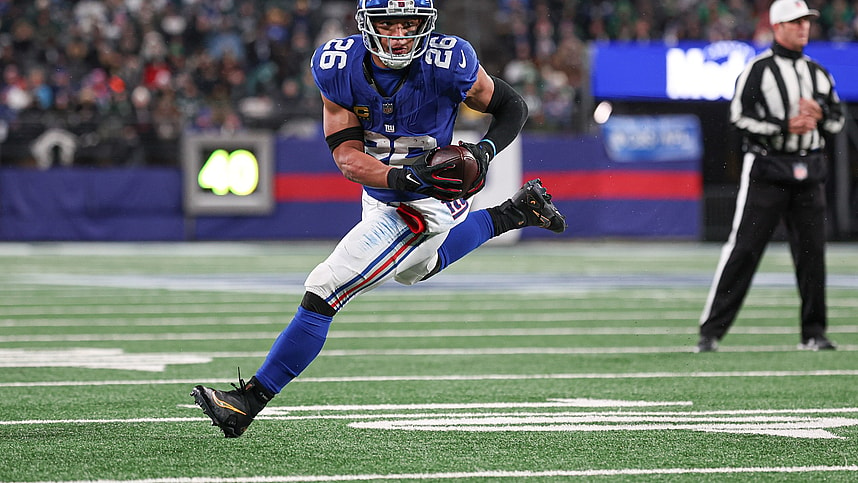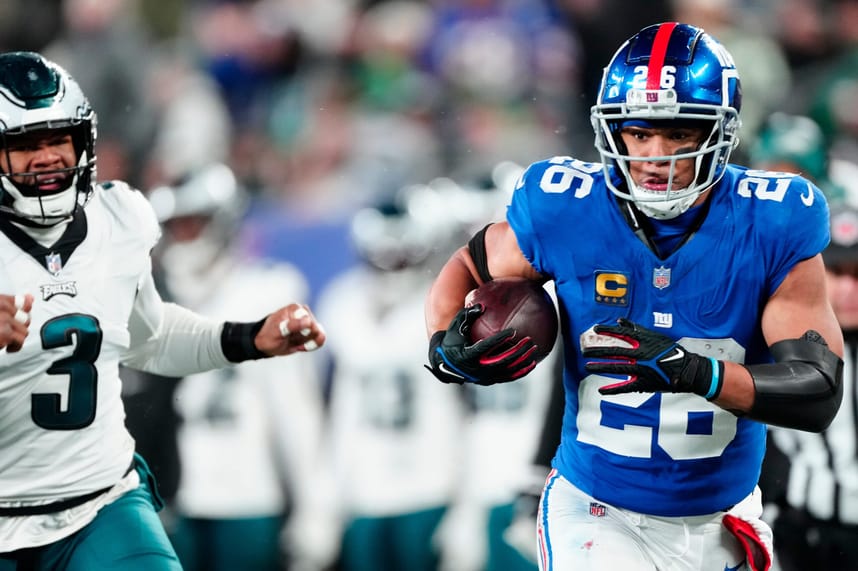
The New York Giants’ offseason strategy focused on prioritizing positional value and avoiding overspending at positions that could be filled with mid-round draft picks. This approach guided General Manager Joe Schoen’s decision to allow star running back Saquon Barkley to test free agency rather than offering him a costly long-term extension.
Barkley’s Move to the Eagles and Giants’ Fiscal Prudence
Saquon Barkley ultimately signed with the Philadelphia Eagles on a three-year, $37.75 million deal, which included $26 million guaranteed at signing. During HBO’s “Hard Knocks,” Schoen had requested Barkley to give the Giants a chance to match any free-agent offers. However, the Eagles’ offer exceeded the Giants’ valuation, leading to Barkley’s departure. Schoen noted that had the Giants been willing to approach the Eagles’ offer, Barkley might have stayed.

Singletary Steps In with a More Cost-Effective Deal
In place of Barkley, the Giants signed Devin Singletary to a three-year, $16.5 million deal with only $9.5 million guaranteed—a move that saved the Giants $17 million in guarantees compared to Barkley’s deal. Singletary, though not as explosive as Barkley, has demonstrated significant production. Last season, he tallied 986 yards, five touchdowns, and just one fumble over 238 attempts, showing he could be a valuable asset at a reduced price.
Comparative Performance: Singletary vs. Barkley
Singletary’s performance last season was comparable to Barkley’s, who produced 962 yards and six touchdowns with two fumbles over 247 attempts. It’s noteworthy that Singletary’s offensive line was slightly better than the Giants’, which may have influenced the similar output. This context suggests that Singletary could provide comparable results under different circumstances.

Strategic Investments: Beyond the Running Back Position
Instead of investing heavily in Barkley, the Giants allocated funds to strengthen other key areas like the pass rush and offensive line, signing pass rusher Brian Burns and enhancing pass protection. This strategy underscores the NFL’s shift toward valuing the passing game over traditional running plays.
- Giants’ future hangs in the balance with winnable games left on the schedule
- The Giants’ head coaching search could quietly become a family affair
- Giants Head Coach Search: Klint Kubiak vs. Chris Shula after Seahawks-Rams TNF shootout
Looking Ahead: Big Blue’s Long-Term Planning
Schoen’s decision not to commit substantial long-term money to a 27-year-old running back reflects a broader strategy aimed at building a competitive team for the future. By potentially developing a strong quarterback and robust trench support, the Giants position themselves to compete at a higher level in the coming years, potentially reaching a place where making a significant investment in a player like Barkley makes strategic sense.
More about: New York Giants